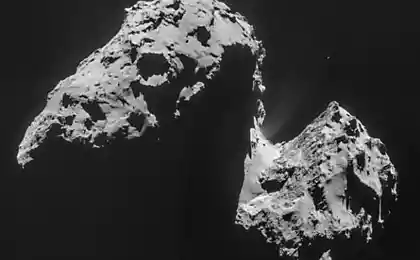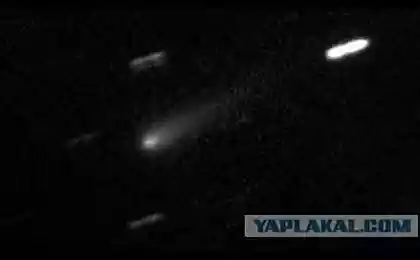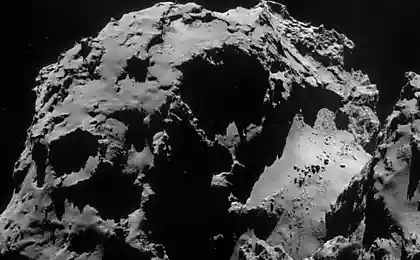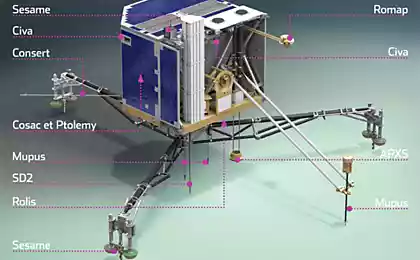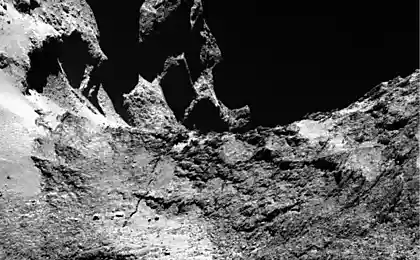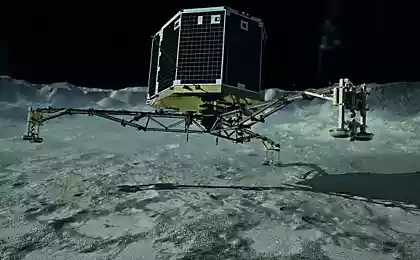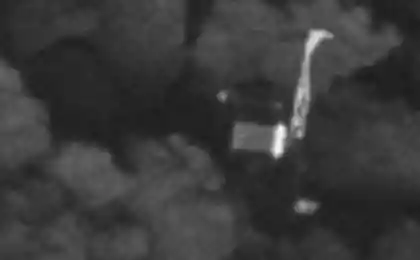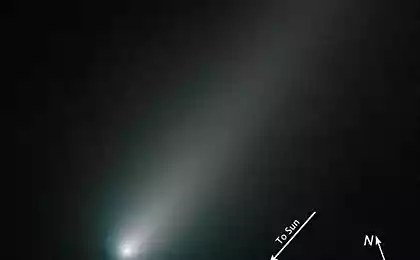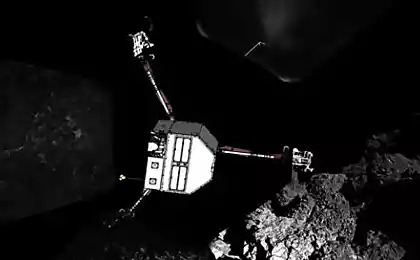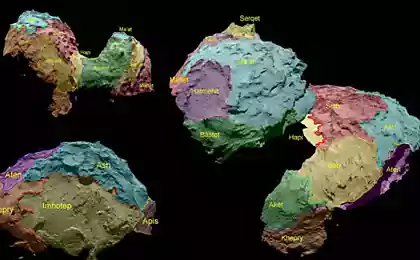768
Probe Fila passed unexpected data on organic compounds detected in the comet Churyumov-Gerasimenko
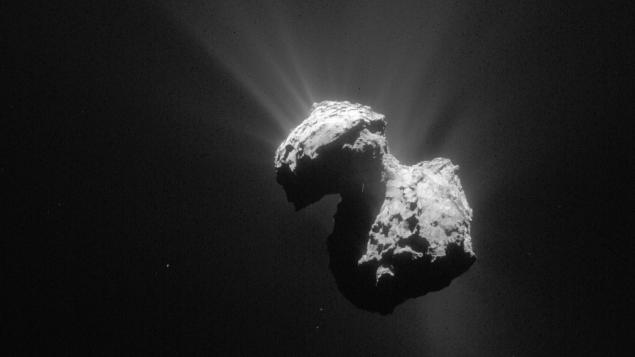
By processing the information transmitted probe Fila (Philae) with comet Churyumov-Gerasimenko in brief moments of communication with Earth, scientists from the National Center for Scientific Research (France) наткнулись the relatively large dark particles size from a millimeter or more, which seems to contain complex organic compounds that absorb light. This is one of the surprises that the researchers presented the comet.
Some scientists have long expressed the theory that a comet had a direct influence on the emergence of life on Earth. According to the theory, most of the water on the planet brought comets. Other researchers believe that the comet could also bring organic compounds from which life was born then, or is already "ready" microorganisms.
In support of the theory say found on the surface of comet nuclei of different organic compounds. In 2009, the ship Stardust («Star Dust") entered into a tail of comet Wild 2 and collected samples of material, resulting in the dust was detected amino acid glycine .
And on the surface of the nucleus of comet Churyumov-Gerasimenko (which Western sources, is unable to cope with complicated names, affectionately called Churi), found a dozen different organic compounds. Scientists sorted them into six classes - alcohols, carbonyls, amines, nitriles, amides and isocyanates. The molecules of these four classes were first discovered in the cometary matter.
The surprise was the fact that organic molecules prior to the appearance of organic matter (sugars, amino acids, DNA and so forth.), Are not just frozen in the ice, as previously thought. They were presented in the form of particles, granules macroscopic size. It can serve as a good proof of the comet theory - getting these "seeds" in the ocean could lead to life on the planet.
Probe Fila fail "prikometilsya" a celestial body last year. Although the landing point was observed, pushing the rocket engine of the probe did not work - like harpoons, which were to attach it to the surface. As a result, he jumped lightly over the surface of a comet, and lay down in the shade of a small cliff that prevented the flow of solar energy to it. But even these jumps scientists extracted some data, an idea of the characteristics of the surface of a comet.
Last time the probe contacted Earth July 9 . Although the sessions were short, and the amount of data - is not quite so, some scientists had hoped to get even this information long enough to study and possibly interesting discoveries.
Source: geektimes.ru/post/259606/
Astronauts dissolved effervescent tablet in weightlessness
The New York Court of chimpanzees - not people
